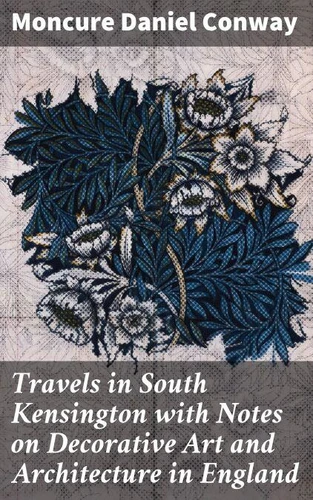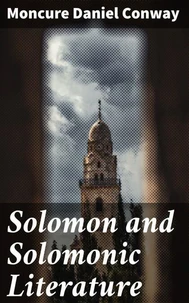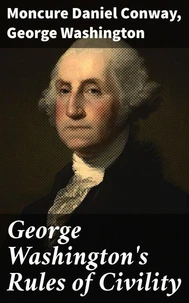Travels in South Kensington with Notes on Decorative Art and Architecture in England. Exploring Victorian Decorative Art in South Kensington
Par :Formats :
Disponible dans votre compte client Decitre ou Furet du Nord dès validation de votre commande. Le format ePub est :
- Compatible avec une lecture sur My Vivlio (smartphone, tablette, ordinateur)
- Compatible avec une lecture sur liseuses Vivlio
- Pour les liseuses autres que Vivlio, vous devez utiliser le logiciel Adobe Digital Edition. Non compatible avec la lecture sur les liseuses Kindle, Remarkable et Sony
 , qui est-ce ?
, qui est-ce ?Notre partenaire de plateforme de lecture numérique où vous retrouverez l'ensemble de vos ebooks gratuitement
Pour en savoir plus sur nos ebooks, consultez notre aide en ligne ici
- Nombre de pages215
- FormatePub
- ISBN406-4-06-618600-5
- EAN4064066186005
- Date de parution18/05/2021
- Protection num.Digital Watermarking
- Taille5 Mo
- Infos supplémentairesepub
- ÉditeurGOOD PRESS
Résumé
In "Travels in South Kensington with Notes on Decorative Art and Architecture in England, " Moncure Daniel Conway presents a meticulous exploration of the rich artistic heritage found in one of London's most vibrant districts. Written in a descriptive and engaging style, the book serves as both a travel narrative and an insightful critique of decorative arts and architecture. Conway's keen observations blend anecdotal vignettes with historical analysis, illustrating how design reflects broader cultural trends during the 19th century.
His work is imbued with the spirit of inquiry characteristic of the Victorian era, situating it within a context of burgeoning aesthetic theory and an expanding appreciation for the decorative arts. Conway, an American abolitionist and a close associate of prominent figures in the Transcendentalist movement, was deeply influenced by his progressive values and cultural curiosity. His travels through South Kensington symbolize a quest for beauty and enlightenment'Äîreflecting a broader Romantic ethos.
Conway'Äôs unique background, having traversed both American and European landscapes, lends authenticity and depth to his observations, culminating in a rich, interdisciplinary dialogue about art and architecture. Readers with an interest in art history, architecture, or cultural studies will find "Travels in South Kensington" a compelling resource. Conway'Äôs articulate reflections invite readers to not only appreciate the aesthetic dimensions of the environment but also engage with the ideological undercurrents shaping the decorative arts in his time.
This work is essential for anyone seeking to enrich their understanding of the intersection between culture and design in 19th-century England.
His work is imbued with the spirit of inquiry characteristic of the Victorian era, situating it within a context of burgeoning aesthetic theory and an expanding appreciation for the decorative arts. Conway, an American abolitionist and a close associate of prominent figures in the Transcendentalist movement, was deeply influenced by his progressive values and cultural curiosity. His travels through South Kensington symbolize a quest for beauty and enlightenment'Äîreflecting a broader Romantic ethos.
Conway'Äôs unique background, having traversed both American and European landscapes, lends authenticity and depth to his observations, culminating in a rich, interdisciplinary dialogue about art and architecture. Readers with an interest in art history, architecture, or cultural studies will find "Travels in South Kensington" a compelling resource. Conway'Äôs articulate reflections invite readers to not only appreciate the aesthetic dimensions of the environment but also engage with the ideological undercurrents shaping the decorative arts in his time.
This work is essential for anyone seeking to enrich their understanding of the intersection between culture and design in 19th-century England.
In "Travels in South Kensington with Notes on Decorative Art and Architecture in England, " Moncure Daniel Conway presents a meticulous exploration of the rich artistic heritage found in one of London's most vibrant districts. Written in a descriptive and engaging style, the book serves as both a travel narrative and an insightful critique of decorative arts and architecture. Conway's keen observations blend anecdotal vignettes with historical analysis, illustrating how design reflects broader cultural trends during the 19th century.
His work is imbued with the spirit of inquiry characteristic of the Victorian era, situating it within a context of burgeoning aesthetic theory and an expanding appreciation for the decorative arts. Conway, an American abolitionist and a close associate of prominent figures in the Transcendentalist movement, was deeply influenced by his progressive values and cultural curiosity. His travels through South Kensington symbolize a quest for beauty and enlightenment'Äîreflecting a broader Romantic ethos.
Conway'Äôs unique background, having traversed both American and European landscapes, lends authenticity and depth to his observations, culminating in a rich, interdisciplinary dialogue about art and architecture. Readers with an interest in art history, architecture, or cultural studies will find "Travels in South Kensington" a compelling resource. Conway'Äôs articulate reflections invite readers to not only appreciate the aesthetic dimensions of the environment but also engage with the ideological undercurrents shaping the decorative arts in his time.
This work is essential for anyone seeking to enrich their understanding of the intersection between culture and design in 19th-century England.
His work is imbued with the spirit of inquiry characteristic of the Victorian era, situating it within a context of burgeoning aesthetic theory and an expanding appreciation for the decorative arts. Conway, an American abolitionist and a close associate of prominent figures in the Transcendentalist movement, was deeply influenced by his progressive values and cultural curiosity. His travels through South Kensington symbolize a quest for beauty and enlightenment'Äîreflecting a broader Romantic ethos.
Conway'Äôs unique background, having traversed both American and European landscapes, lends authenticity and depth to his observations, culminating in a rich, interdisciplinary dialogue about art and architecture. Readers with an interest in art history, architecture, or cultural studies will find "Travels in South Kensington" a compelling resource. Conway'Äôs articulate reflections invite readers to not only appreciate the aesthetic dimensions of the environment but also engage with the ideological undercurrents shaping the decorative arts in his time.
This work is essential for anyone seeking to enrich their understanding of the intersection between culture and design in 19th-century England.






